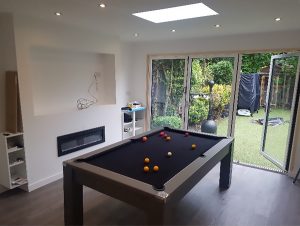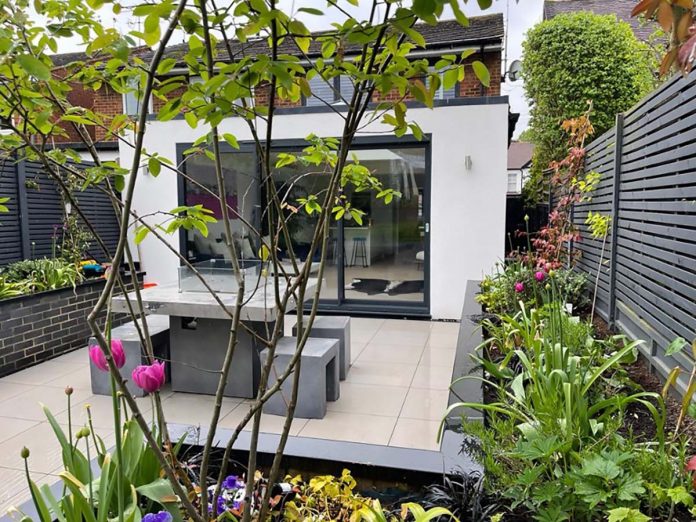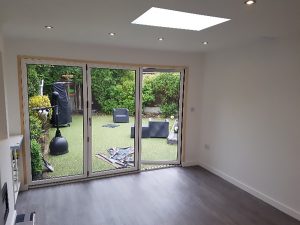As more homeowners turn to make the most of the space they have, it’s important to remain compliant with the amended Part L building regulations. Find out how Structural Insulated Panels (SIPs) can support this
Data from TSB Bank states, 2 in 5 homeowners would rather build an extension than move house. With more and more people enquiring about extensions, garden rooms, annexes, and dormers, now is the perfect time to consider the use of SIPs as your building material.
Structural Insulated Panels (SIPs) not only allow for faster build times in comparison to the traditional brick and block method, but also allows for better thermal performance whilst taking up less internal space.
What are the benefits of using SIPs for home improvements?
- Thermally efficient
- Faster build times
- Reduce waste & fuel costs
- More internal space
Using SIPs to create your dream garden room
A North-West based builder used SIPs for the first time to build his customer’s dream garden room, he was pleasantly surprised by the benefits. He said: “The project ran smoothly, and the customer was pleased with the result which means I don’t have to sort any complaints, and happy customers mean referrals. Their garden room is thermally efficient, sustainable, and extremely durable. It will last the test of time, for sure. My message to any builder out there who has never tried working with SIPs is: do it. You won’t regret it.”
Part L building regulations for home improvements, extensions, and alterations
From 15th June 2022, the amended approved document Part L of the Building Regulations for new homes, including self-build, and improvements to existing homes including extensions and alterations, whether planning permission is required or not, stipulates a 31% reduction for operational energy vs 2013 regulations.
The Part L update relates to the conservation of fuel and power. The reductions required in operational energy can be achieved through both the building fabric and the choice of technology (renewables) used in the building. The methodology which will measure the operational energy is the new SAP 10.2. This models the building fabric U values (heat loss over the surface area) and the PSI values (heat loss through the junction).
How do SIPs compare to traditional methods of construction?
To attain a U value of 0.18 for walls, there is a gain of nearly 1m2 additional floor space when using SIPs instead of brick and block, in this 7m x 4m home extension example:

Brick and block 393mm
With a need for extra cavity insulation to meet the new standards, the total thickness of a brick and block wall is 393mm, made up of bricks 102.5mm; cavity filled with 150mm insulation; 100mm block; 25mm space created by dot and dab, 1 x plasterboard 12.5mm and 3mm skim.
SIPs with brick render 342.5mm
The total thickness of a SIPs wall: 150mm SIP; bricks 102.5mm; cavity 60mm; breather membrane 2mm; 2 x plasterboard 25mm and 3mm skim.
Trevor Clements, head of business development at Hertfordshire Building Control put it this way, during the BBA Future Home Standards webinar in November 2021: “There may be a few of you out there who are involved in extensions & alterations to dwellings. What’s happening with those? … The big one is, it’s a bit more than a tweak, walls from 0.28 to 0.18. So, it will be interesting to see how designers and industry hit that standard with your traditional cavity walls, brick and block. Are we going to be seeing some big cavities, are we going to be seeing more use of high efficiency insulation because that’s going to be a huge cavity if you are going to be using mineral fibre or fibre glass batts to achieve that mark.”
As one of the UK’s leading manufacturers of insulated panels, Hemsec is supporting an increasing number of builders, architects and designers who need to deliver on Approved Amendments to Part L of the Building Regulations cost-effectively, as well as those designing for fast-track building projects.
To find out more, please contact us.
Hannah Jepp
Marketing Manager
Tel: 0151 426 7171
*Please note: This is a commercial profile


















